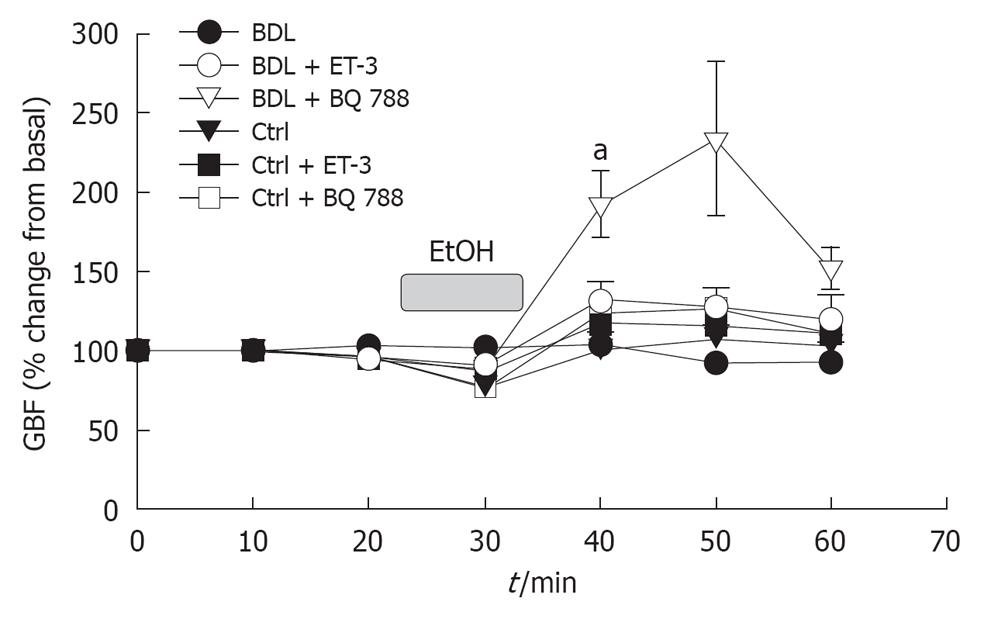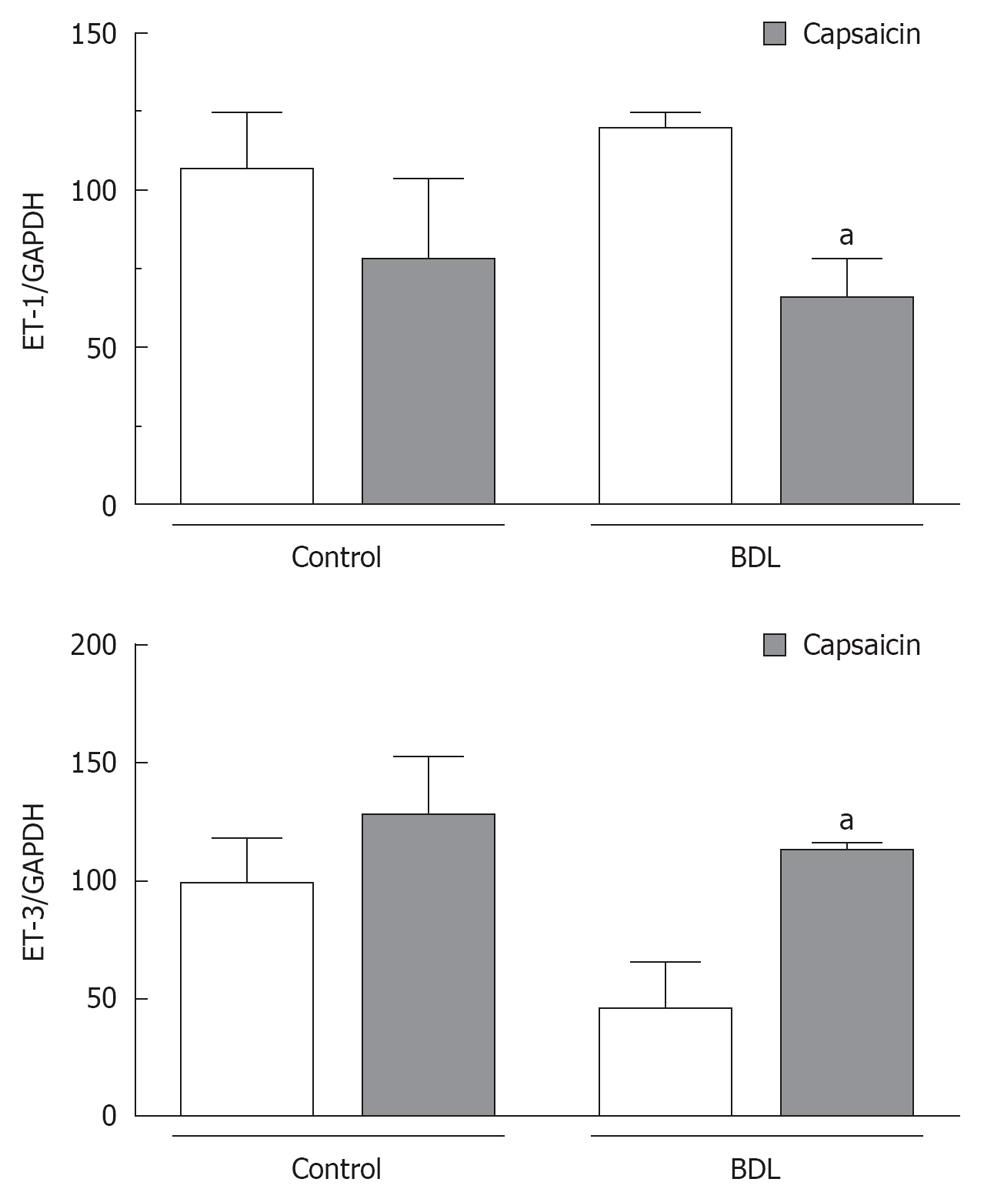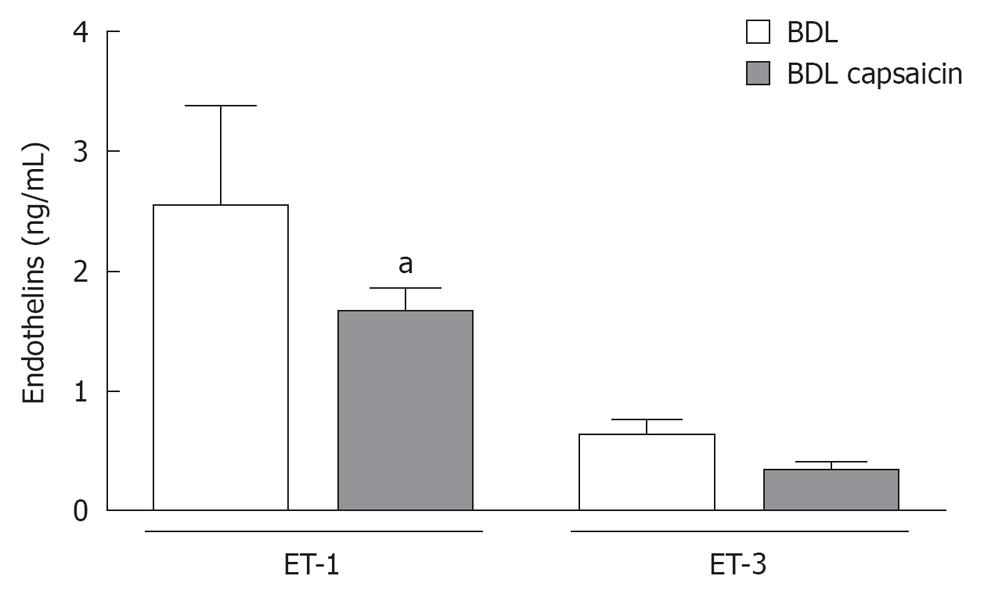Copyright
©2012 Baishideng.
World J Gastrointest Pathophysiol. Aug 15, 2012; 3(4): 85-91
Published online Aug 15, 2012. doi: 10.4291/wjgp.v3.i4.85
Published online Aug 15, 2012. doi: 10.4291/wjgp.v3.i4.85
Figure 1 Ethanol-induced gastric damage in bile duct-ligated rats compared to controls.
Gastric damage induced by EtOH-40% was significantly (P < 0.05) reduced in bile duct-ligated (BDL) and control rats submitted to endothelin-3 or ETB receptor antagonist (BQ788) pretreatment, but not after endothelin-1 or ETA receptor antagonist (BQ485) pretreatment. aSignificant difference compared to vehicle-treated control rats (P < 0.05).
Figure 2 Gastric damage in bile duct-ligated rats after endothelin-3 and endothelin B receptor antagonist pretreatment.
A: Vehicle; B Endothelin-3; C: BQ788.
Figure 3 Gastric blood flow responses to topical application of 40% ethanol followed by HCl in control and bile duct-ligated rats.
ETB receptor antagonist (BQ788) pretreatment increased significantly (aP < 0.05) the responsiveness of the gastric microcirculation to ethanol followed by the acid solution in bile duct-ligated (BDL) rats, while ETA receptor antagonist (BQ485) had no changes.
Figure 4 Gastric endothelin-1 and endothelin-3 expression in control and bile duct-ligated rats relative to the internal housekeeping gene, GAPDH, and expressed as densitometry units.
aSignificant difference compared to respectively control and bile duct ligation (BDL) vehicle-treated rats (P < 0.05).
Figure 5 Gastric endothelin-1 and -3 synthetic capacity as measured by ELISA.
Gastric endothelin (ET)-1 production was increased (P < 0.05) in vehicle- relative to capsaicin-treated bile duct ligation (BDL) rats. aSignificant difference compared to respective controls (P < 0.05).
- Citation: Câmara PR, Ferraz GJ, Velloso LA, Zeitune JMR, Suassuna FA, Ferraz JGP. Endothelin and neonatal capsaicin regulate gastric resistance to injury in BDL rats. World J Gastrointest Pathophysiol 2012; 3(4): 85-91
- URL: https://www.wjgnet.com/2150-5330/full/v3/i4/85.htm
- DOI: https://dx.doi.org/10.4291/wjgp.v3.i4.85













